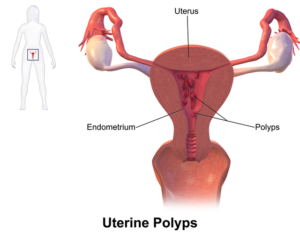#ThursdayThoughts
As promised, each Thursday, we will now offer you a piece of educational, science, or research related information. The purpose of our #ThursdayThoughts post is to share with you fact-based content that can enlighten and assist you on your fertility journey. Enjoy our post! Helping to Create New Beginnings….
What is a hysteroscopy?
As part of the fertility evaluation, a saline-infused sonohysterogram (SIS) is completed between days 6 through 9 of a menstrual cycle. If this test demonstrates endometrial polyps, scar tissue, or fibroids that are affecting the endometrial lining, a hysteroscopy may be recommended. A hysteroscopy can be both a diagnostic and therapeutic procedure that examines the uterine cavity. Depending on the type of hysteroscope used and what the indication for the procedure is, it may be done awake or under anesthesia. A hysteroscope, is a thin, flexible camera that isinserted through the vagina into the uterus to evaluate the uterine cavity. The camera transmits imaging onto a screen so that the physician can clearly see inside of the uterine cavity. Instruments to biopsy or remove uterine pathology can be passed along the hysteroscope under direct visualization. The tissue is then sent to the lab for examination. 1
This procedure typically does not require an overnight stay in the hospital. Patients are usually sent home the same day with post-operative care instructions. Patients that undergo hysteroscopy may have some slight cramping and vaginal bleeding few days following the procedure. Taking Ibuprofen or Tylenol can help reduce any pain. Hysteroscopy is a very safe procedure with low risk of complications.
Non-cancerous growths of the uterus such as fibroids and polyps can be removed during a hysteroscopy. Patients diagnosed with intra-uterine adhesions that undergo hysteroscopy may increase their chances of fertility. Their prognosis is related to the extent of these adhesions or synechiae. 2 A uterine septum, a malformation of the uterus, can also be confirmed and treated
 For more information regarding evaluation and treatment options that are available, please schedule an appointment with one of our providers at the Fertility Institute of Hawaii 808-545-2800 or visit our website at https://www.ivfcenterhawaii.com.
For more information regarding evaluation and treatment options that are available, please schedule an appointment with one of our providers at the Fertility Institute of Hawaii 808-545-2800 or visit our website at https://www.ivfcenterhawaii.com.
References:
- https://www.acog.org/womens-health/faqs/hysteroscopy
- Kdous M, Hachicha R, Zhiou F, et al. [Fertility after hysteroscopic treatment of intra-uterine adhesions]. Gynecologie, Obstetrique & Fertilite. 2003 May;31(5):422-428. DOI: 10.1016/s1297-9589(03)00101-2. PMID: 14567119.
- Uterine Polyps image by Blausen Medical.